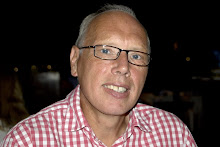An interesting meeting in Barcelona with two main topics.
The Future of e-Learning in Higher Education:By 2001, many institutes had created established course management systems (as opposed to their teachers using a variety of management systems).
The question asked was: are we starting to see the end of the institute course management systems? Are many of the functions in the CMS being replaced with Web 2.0 services; which are supplied externally to the institute (wikis, social networks,...)?
It was agreed that the answer would be to use SOAs with well defined standards, so that it would be possible to integrate added services to a CMS framework. Cardiff is using this approach with Sakai as the underlying framework.
Many people are concerned that Blackboard acquired WebCT (and the forced migration of users of the latter) - and universities are now actively looking for Open Source alternatives (Moodle is the favourite, then Sakai).
Green ITIt is estimated that IT 's carbon contribution is 2% of the total (roughly the same scale as aviation).
But within higher education, for universities which do not run large pieces of scientific equipment, the IT share is estimated to be between 15 and 20% total.
{http://www.ghg.protocol.org enables you to do your own calculations.}
The consequence is that changes to IT can offer significant carbon savings within a university as a fraction of the whole.
The effects of ICT on environmental sustainability:
- Negative: Greenhouse gas emission in manufacture. waste, hazardous substances, use of scarce resources
- Positive: Travel substitution, transport optimisation, e-Business and e-Government, environmental controls systems
ICT's Global Emissions:-
- Printing (6%): mainly paper and not the energy to print
- LAN and Office Telecoms (7%): difficult to tackle
- Mobile Telecoms (9%)
- Fixed-Line Telecoms (15%)
- Servers including cooling - data centre (24%)
- PCs, etc (39%): focus should be here
The embodied energy for a PC (building and delivery) is estimated to be 70-80% of the total energy used by the PC (but this ratio is questioned by the manufacturers).
It is recommended to undertake an environmental assessment, and set targets for power consumption and carbon levels.
It is estimated that 2,500 PCs and laptops cost 64kEuros in electricity over a year. it is relatively easy to halve this.
Data Centres are intending to cut power by:
- virtualizing
- stopping over-provisioning
- using power management to throttle power based on use
- using a low power state or shutting servers down when not in use
- smart energy management (directing cooling)
http://www.epeat.net/ is a good site to help purchasers evaluate, compare and select desktop computers, notebooks and monitors based on their environmental attributes.

